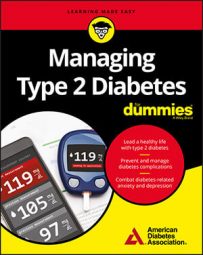There are two non-insulin classes of injected medication for type 2 diabetes: GLP-1 agonists and amylin analogs.
The table lists the injected medications for type 2 diabetes.
| Drug Class | How It Works | Generic Name | Brand Name |
| Glucagon-like peptide-1 (GLP-1) receptor agonists | Mimics the action of the incretin hormone GLP-1. Stimulates your body to produce more insulin. Slows down how quickly your stomach empties. | Exenatide | Byetta |
| Extended Release Exenatide | Bydureon | ||
| Liraglutide | Victoza | ||
| Dulaglutide | Trulicity | ||
| Lixisenatide | Adlyxin | ||
| Amylin analogs | Mimics the action of the hormone amylin. Slows down how quickly your stomach empties. Suppresses your liver from releasing glucagon, a hormone that moves glucose into your bloodstream. | Pramlintide | Symlin |
GLP-1 agonists
Glucagon-like peptide-1 receptor agonists (wow, that’s a mouthful) are otherwise know as GLP-1 agonists. They’re also sometimes called incretin mimetics because they mimic the action of the incretin hormone GLP-1, which helps lower blood glucose. GLP-1 agonists help your body make more insulin and slow down how quickly your stomach empties so your blood glucose doesn’t rise as rapidly. They may also make you less hungry and encourage some weight loss. GLP-1 agonists include exenatide (Byetta), liraglutide (Victoza), extended-release exenatide (Bydureon), dulaglutide (Trulicity), and lixisenatide (Adlyxin). Victoza can be used to reduce the risk of heart attack, stroke, and other cardiovascular events in adults with type 2 diabetes and at high risk for cardiovascular disease.Exenatide received FDA approval in 2005. You inject GLP-1 agonists using a pre-dosed pen. Depending on the medication, you may inject twice a day, once a day, or once a week.
Side effects include weight loss, nausea and vomiting (and resulting dehydration), episodes of low blood glucose, kidney problems, and inflammation of the pancreas. Tell your healthcare provider if you’ve had pancreatitis, gallstones, a history of alcoholism, high triglycerides, or kidney problems.
Whether you’re starting a new medication or just can’t remember, don’t be afraid to ask your healthcare provider why you’re taking it. Knowing the reasons why you take a specific medication may help you remember to take it — or just feel more empowered about your actions.
Amylin analogs
Amylin analogs mimic a hormone called amylin that the body naturally produces along with insulin. Pramlintide (Symlin) is a manufactured version of this hormone. Some people with type 2 diabetes don’t make enough insulin or enough amylin. Pramlintide lowers blood glucose by slowing how fast your stomach empties and suppressing your liver from releasing a hormone called glucagon, which puts glucose into your bloodstream. It may also encourage you to eat less because you feel fuller at meals.Pramlintide received FDA approval in 2005 for people with type 1 or type 2 diabetes who use insulin. You inject pramlintide using a disposable pen during meals. It does not replace insulin. It’s helpful for people who need something beyond insulin to help control their blood glucose.
Side effects include episodes of low blood glucose, nausea, vomiting, stomach pain, and headache.

